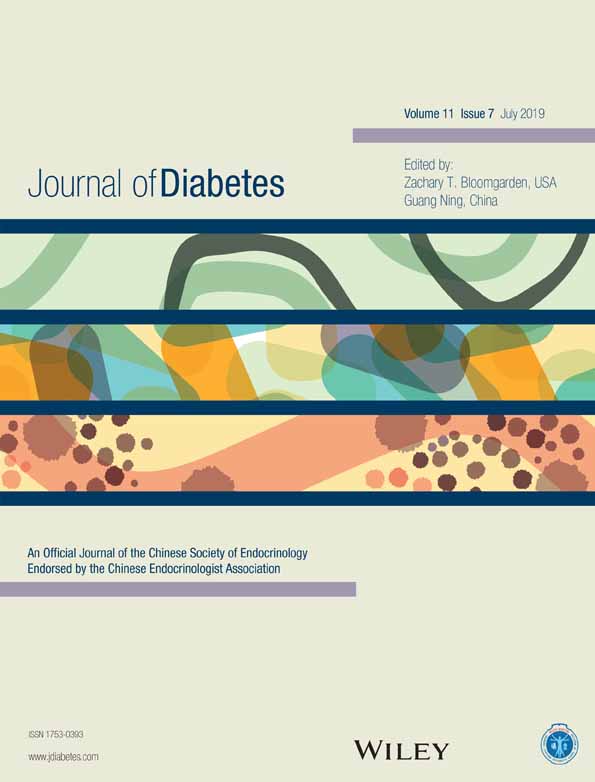Introduction to the 2nd Heart in Diabetes (HiD) Meeting
第二届糖尿病心脏(HiD)会议简介
The second Heart in Diabetes (HiD) meeting was held in Philadelphia on 13 to 15 July 2018. The HiD meeting is a unique continuing medical education (CME) conference designed to evaluate state-of-the-art clinical research outcomes on heart, kidney, and liver disease in diabetes and its implications for clinical practice. Speakers from a variety of disciplines, including endocrinology, cardiology, nephrology, and epidemiology, reviewed new developments in this important topic, focusing on the effect of the new clinical science on the management of cardiometabolic conditions. Several commentaries from the meeting appear in this issue of the Journal of Diabetes, giving some of the flavor of the presentations and the whole conference.
Rocha and Das address the developing role of the cardiologist in managing cardiovascular risk in patients with type 2 diabetes (T2D),1 which must now evolve beyond simple risk factor control to include the expanded use of glucagon-like peptide receptor agonists (GLP-1RAs) and sodium-glucose cotransporter 2 inhibitors (SGLT2i) to improve cardiovascular outcomes. Cardiologists are now called upon to take a greater role in the care of patients with T2D, in partnership with endocrinologists. Lepor2 specifically discusses lipid-lowering treatments, summarizing large cardiovascular outcome studies in diabetes addressing the benefit of lipid modification with statins, ezetimibe, icosapent ethyl, and proprotein convertase subtilisin/kexin type 9 (PCSK9) inhibitors in diabetic patients. Weir suggests that improving on traditional strategies in predicting, preventing, and managing cardiovascular and chronic kidney disease progression in people with T2D will improve outcomes,3 proposing that SGLT2i and GLP-1RAs may affect the pathophysiology of vascular disease in these patients, perhaps by specifically antagonizing vascular inflammation. Godoy and Faroukh4 review aspects of the controversy regarding approaches to revascularization, suggesting that although it is currently accepted that surgical revascularization is superior to percutaneous coronary revascularization in patients with diabetes, this may not be the case following acute coronary syndrome. Straw et al5 discuss heart failure as a preventable and treatable complication of T2D, whereas Khan and Butler6 focus on the role of SGLT2i in this condition. Although current data support the use of SGLT2i for primary prevention of congestive heart failure, data related to secondary prevention of adverse outcomes in those with prevalent heart failure must be interpreted with care.
The third HiD meeting will take place on 12 to 14 July 2019, in Philadelphia, and will further the understanding of the intersection of the heart and kidney in diabetes, discussing implications of new data on the role of traditional and novel approaches to the prevention and management of the patient with diabetes, obesity, and other cardiometabolic conditions.
第二届糖尿病心脏(Heart in Diabetes,HiD)会议于2018年7月13日至15日在费城举行。HiD会议是一个独特的继续医学教育会议,旨在评估糖尿病性心脏病、肾病以及肝病相关的最新临床研究成果及其对临床实践的影响。来自多个学科(包括内分泌学、心脏病学、肾脏病学以及流行病学)的讲者回顾了这个重要主题的最新进展,重点介绍了最新临床科学对心脏代谢状况管理的影响。其中几篇会议评论发表在本期的Journal of Diabetes,反映了部分演讲内容以及整个会议的特色。
Rocha与Das阐述了心脏病学家在管理2型糖尿病(T2D)患者心血管风险方面所扮演的角色转变1,为了改善心血管预后,现在除了要控制简单的危险因素外,还必须扩大范围使用胰高血糖素样肽-1受体激动剂(GLP-1RAs)与钠-葡萄糖共转运体2抑制剂(SGLT2i)治疗。现在要求心脏病学家与内分泌学家进行合作,在治疗T2D患者方面发挥更大的作用。Lepor2专门讨论了调脂治疗,总结了糖尿病患者的大型心血管结果研究,探讨了糖尿病患者使用他汀类药物、依折麦布、二十碳五烯酸乙酯以及前蛋白转化酶枯草杆菌蛋白酶/Kexin 9型(PCSK9)抑制剂调脂治疗的益处。Weir认为,在T2D患者中预测、预防与管理心血管以及慢性肾病进展方面,改进传统策略将会改善预后3,他提出了SGLT2i与GLP-1RAs可能会影响这些患者血管疾病的病理生理学,这两类药物也许有特异性的抗血管炎症的作用。Godoy与Faroukh4 回顾了有关血运重建方法的争议部分,他们认为尽管目前公认糖尿病患者采用外科手术血运重建法优于采用经皮冠状动脉血运重建法,但是对于急性冠状动脉综合征患者来说可能并不是这样。Straw等5详述了心力衰竭是一种可预防与可治疗的T2D并发症,而Khan与Butler6更关注的却是在这种情况下使用SGLT2i治疗有何影响。虽然目前的数据支持充血性心力衰竭的一级预防可以使用SGLT2i治疗,但是对于那些已有明显心力衰竭需要二级预防的患者来说,我们还必须谨慎地解释与不良后果相关的数据。
第三届HiD会议将于2019年7月12日至14日在费城举行,这将进一步有助于我们了解糖尿病患者的心脏病与肾脏病如何发生交集,还将讨论一些新的、有关传统方法与新方法对糖尿病、肥胖以及其他心脏代谢疾病患者的预防以及管理的相关数据的应用。
ACKNOWLEDGEMENT
The Editors of the Journal of Diabetes and the Chairs of HiD acknowledge the contribution of Adrienne Stevens (Director of Scientific and Medical Communication, Metabolic Endocrine Education Foundation) to the organization of this collection of commentaries.




